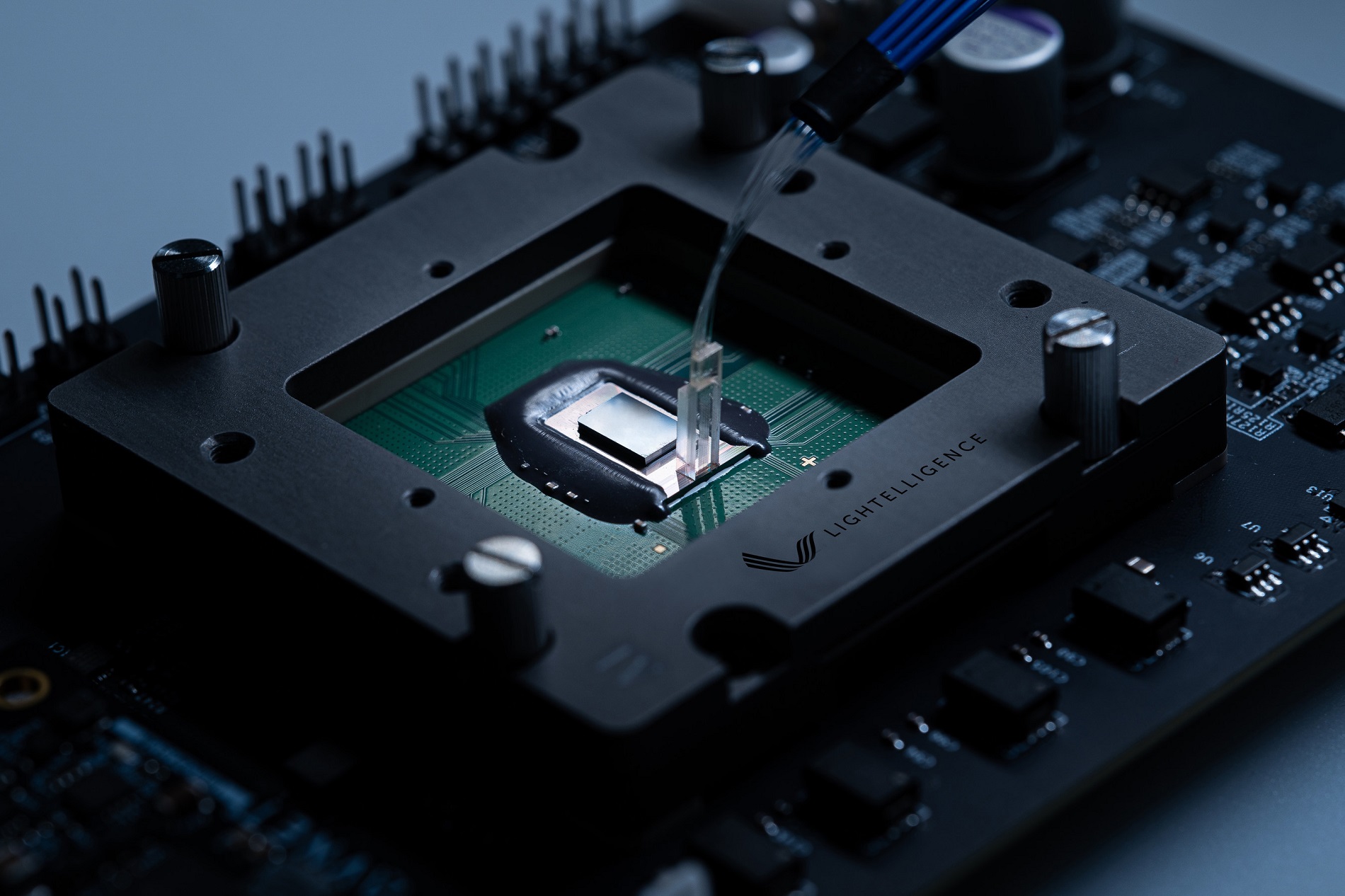BOSTON, Dec. 15, 2021 /PRNewswire/ -- Lightelligence, the global optical computing innovator, today revealed its Photonic Arithmetic Computing Engine (PACE), the company's latest platform to fully integrate photonics and electronics in a small form factor. Leveraging custom 3D packaging and seamless co-design efforts in its technology, Lightelligence remains the world's only company to demonstrate fully integrated optical computing systems working at speed.
As Lightelligence's first demonstration of optical computing for use cases beyond AI and deep learning, PACE efficiently searches for solutions to several of the hardest computational math problems, including the Ising problem, and the graph Max-Cut and Min-Cut problems, illustrating the real-world potential of integrated photonics in advanced computation.
"These problems belong to an important class of intractable mathematical problems known as NP-complete, which have stumped mathematicians for the last 50 years," said Yichen Shen, Ph.D., founder and CEO of Lightelligence. "Algorithms for NP-complete problems are important because they can be mapped to each other, and they have hundreds of practical applications in fields that include cryptography, power grid optimization and advanced image analysis. The progress we've made on NP-complete combinatorial optimization problems illustrates the potential of our technology to transform computing."
About PACE
Building on the success of the company's first-of-its-kind 2019 demonstration of an optical AI system, PACE uses optical matrix multiplication to generate optimal solutions for the Ising problem, and the graph Max-Cut and Min-Cut problems.
The algorithm used by PACE takes advantage of the fundamental principle that performing matrix-vector multiplication with light can be done with extremely low latency, as first announced in Nature Communicationsi by a team of researchers that included Shen. The PACE demo achieves low latency by using a tight loop consisting of repeated optical matrix multiplication and a clever use of controlled noise to generate high-quality solutions to combinatorial optimization problems. This approach, which would be substantially inferior with electronic circuits alone, demonstrates the advantages of optical computing over traditional electronic paradigms. While this demonstration doesn't show optical superiority for all applications, PACE runs this particular Ising problem algorithm hundreds of times faster than a typical computing unit, such as NVIDIA RTX® 3080, and 25 times faster than other algorithms, such as the Simulated Bifurcation Machine, for the selected Ising problem.
To utilize the advantages of optical computing, Lightelligence has designed and built optical chips to work seamlessly with traditional electronic chips and systems. "One of Lightelligence's advantages over other companies developing optical computing is our ability to co-design many different domains together," said Erwan Di Vita, lead engineer for PACE at Lightelligence. "Our photonic engineers work alongside analog, digital, packaging and software engineers to design the chips, which are then manufactured and built into 3D systems by our post-silicon teams. Without such innovations from our opto-electronic packaging team, none of this would be possible."
In addition to its advances in 3D packaging, PACE's photonic chip contains over 12,000 discrete photonic devices, the densest of any 3D-integrated photonics chip in a proven working system.
Looking Ahead
When asked what's next, Shen says Lightelligence will build on the success of demo platforms such as PACE to pilot an AI Accelerator with global leaders in finance and cloud computing in 2022.
"PACE proves that our integration of photonic chips and electronic chips in a small 3D stack does what we've intended—deliver unprecedented computational power in a platform that's compact, low-power, low-temperature and not gated by Moore's Law," said Shen.
About Lightelligence
Lightelligence is harnessing the power of light to create technology that redefines what's possible. The company is leading the way in developing real-world photonic solutions that will deliver orders of magnitude more speed in computing. Visit https://www.lightelligence.ai/ to learn more.













